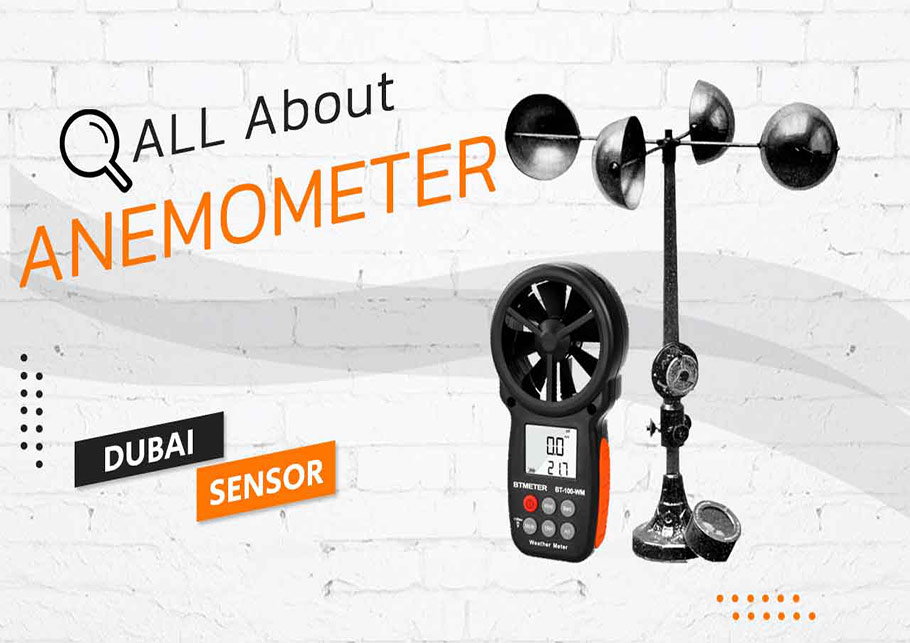Contrasting Digital and Mechanical Anemometers: Which is Right for You?
Contrasting Digital and Mechanical Anemometers: Which is Right for You?
Blog Article
All You Need to Know Regarding Anemometers: Exactly How They Function, Why They Matter, and Where to Make use of Them
Anemometers, though frequently ignored in the realm of scientific tools, play an important role in different fields, providing beneficial insights right into wind rate and air movement patterns. Understanding the mechanics behind these devices is necessary for anybody looking for to harness the power of this information. From meteorologists tracking climate patterns to engineers developing frameworks with wind lots in mind, the applications of anemometers are varied and far-reaching. As we dig right into the details of anemometer technology, we will reveal the internal functions of these gadgets, their significance, and the crucial considerations when picking the ideal anemometer for particular applications.

Anemometer Basics
An essential tool made use of to gauge wind rate and direction, the anemometer plays a vital role in meteorology and various sectors. An anemometer generally consists of 3 or 4 mugs that rotate in the wind, a vane that points into the wind, and sensing units to track the motions or rotations.
There are different kinds of anemometers available, consisting of cup anemometers, vane anemometers, hot-wire anemometers, and sonic anemometers, each with its one-of-a-kind features and applications. Mug anemometers are typically utilized for basic wind speed measurements, while vane anemometers are preferred for directional measurements. Hot-wire anemometers appropriate for low airspeeds, and sonic anemometers are optimal for high-precision dimensions in research and commercial settings. Recognizing the essentials of anemometers is vital for precise wind data collection and evaluation throughout various fields.
Principles of Anemometer Operation
Building on the fundamental understanding of anemometer fundamentals, the concepts of anemometer operation illuminate the auto mechanics behind wind speed and direction measurements. Cup anemometers, for instance, have three or more mugs that capture the wind, triggering them to rotate faster as the wind rate boosts. Hot-wire anemometers count on a warmed cable that cools down as wind passes over it, with the rate of cooling figuring out the wind speed.
Relevance of Anemometers
The importance of anemometers in meteorology and various industries can not be overemphasized. Anemometers play an important role in determining wind speed and instructions, supplying vital data for weather condition projecting, environment researches, environmental tracking, and aeronautics procedures. Meteorologists count on anemometers to gather exact wind information, assisting them comprehend weather patterns, anticipate tornados, and problem prompt cautions to the general public. In markets such as construction, farming, sustainable energy, and maritime procedures, anemometers are used to maximize processes, ensure safety and security, and boost effectiveness. For instance, wind ranch drivers use anemometers to analyze wind conditions and take full advantage of electricity production from wind generators. In the maritime field, anemometers help ship navigation by offering real-time wind details to captains, aiding them make educated choices to make sure risk-free voyages. Overall, anemometers are vital tools that add considerably to security, performance, and educated decision-making in meteorology and a wide variety of industries.
Applications Throughout Different Industries
In the sustainable energy industry, anemometers play an essential role in assessing wind problems for wind ranch placements, look at here now making sure optimum power production. Industries like construction and mining make use of anemometers to monitor wind speeds, essential for security procedures, specifically when functioning at heights or in open-pit mines where strong winds can position threats. In agriculture, anemometers help farmers in handling crop spraying by providing real-time data on wind rate to stay clear of drift.

Picking the Right Anemometer for Your Demands
Picking the appropriate anemometer customized to your certain requirements is vital for acquiring precise wind rate and instructions measurements. When selecting an anemometer, think about factors such as the intended application, needed dimension array, ecological conditions, and wanted attributes. For basic purposes, a cup anemometer appropriates for determining wind speed, while a vane anemometer provides wind instructions data. Hot-wire anemometers are optimal for reduced airspeed dimensions, and ultrasonic anemometers offer high accuracy and durability.

Verdict
In final thought, anemometers play a vital duty in measuring wind speed and instructions throughout numerous markets. Understanding the principles of anemometer operation is essential for selecting the right gadget for specific needs. From weather forecasting to aviation, anemometers are important tools for gathering precise data and guaranteeing safety and security in different applications. It is essential to think about the value of anemometers in order to make educated choices when selecting one of the most appropriate tool for determining wind conditions.
There are numerous kinds of anemometers readily available, consisting of cup anemometers, vane anemometers, hot-wire anemometers, and sonic anemometers, each with its special attributes and applications. Cup anemometers are commonly utilized for fundamental wind rate dimensions, while vane anemometers are liked for directional dimensions. Hot-wire anemometers are suitable for low airspeeds, and sonic anemometers are suitable for high-precision measurements in study and industrial settings.Building on the foundational understanding of anemometer fundamentals, the principles of anemometer procedure clarify the auto mechanics behind wind rate and direction dimensions. For basic functions, a cup anemometer is why not look here suitable for measuring wind rate, while a vane anemometer gives wind direction information.
Report this page